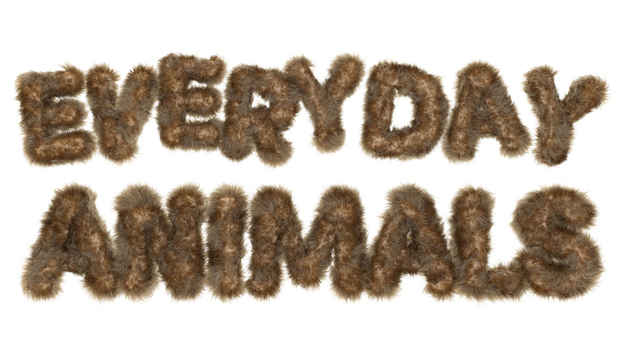“Everyday Animals” Exhibition
ULTERIOR

This event has ended.
Curated by Alex Dodge
Everyday Animals are reliable animals. Our dogs, our cats. They are part of our daily lives; they are part of us. Normally they are predictable animals, but sometimes they are not.
In 2005 a woman in France named Isabelle had a black lab named Tania whom she loved very much. One day Isabelle became unconscious after taking too many sleeping pills. While her owner lay motionless, Tania mauled Isabelle’s face so badly that she would become the world’s first face transplant recipient. It’s still unclear if Tania intended her owner any harm or if she was desperately trying to wake her from her drug-induced state. Tania was euthanized and in 2016 Isabelle would succumb to complications from her experimental surgery.
In the same year lived a couple in the United States whose marriage, which appeared on the surface to be stable if not a reluctantly loving one, was actually falling apart. The husband, then already out of work for a number of years, became sedentary, spending hours each day online while his wife worked menial jobs to make ends meet. They grew apart while going through the daily motions. One day the husband noticed a stray cat in their backyard and began feeding it daily. Aside from a uniquely eccentric meow, the cat seemed well groomed and by all accounts was an inside cat that had lost its way. Against the wife’s better judgment she deferred and the couple brought the cat into their house. Within days the cat began to wreak havoc; soiling the carpet, clawing the upholstery, even attacking the wife. It became clear that this was definitely an outside cat, but the husband refused to let it go. The cat became the source of bitter arguments and after nearly four years, with the house in ruins, the couple seemed on the brink of divorce.
When thinking about art we often consider context to be one of the more important if not the most important factors in shaping its meaning and function. We adhere to the myths of singular or binary transformative admixtures: An object is taken out of its typical setting and placed into an unfamiliar one and voila—urinal becomes fountain. On one level that IS happening, but the more complicated reality is that an artwork, like all things, is a complex system. It is no easier to understand than are the stories about the dog and the cat, but multivariate non-linear relationships are hard to comprehend so we simplify them because heuristics are our specialty and things that don’t fit them are scary. It’s often hard for us to accept that action, intention, and context all feedback on each other in unpredictable ways that are co-transformative. What we are often left to confront is not what it seems at first. It has been argued that this is becoming more apparent in our current culture and we struggle to adapt, what’s often referred to as The Great Weirding. We are at a place that requires new tools of understanding.
Everyday Animals explores how four artists’ use of seemingly everyday materials, forms, and gestures become anything but easy to define. In William Eric Brown’s bronze casts of manipulated cardboard and foam core, one is at first reminded of Twombly’s bronzes often derived from similar materials. Somehow Brown’s feel closer to the original that they were cast from in their detail and fidelity yet shifted ever so slightly out of tune and into a new kind of presence; both physical and virtual / elevated and lowered. Keiko Narahashi’s embrace of ceramics in recent years meanders tactfully between playful, functional, and serious formal investigation, occupying these dimensions simultaneously and unapologetically. Michelle Brandemuehl’s works pair a hyperconscious use of spray paint marking and minimal geometric reconfiguration. The signature flurry overspray is dissected to reveal something quietly poetic and previously unnoticed through the razor-sharp edges of a sliding tile puzzle. Sarah Tortora’s painted wood forms appear nearly algorithmic in origin or perhaps key-like as a final component that completes a system beyond our comprehension.
Everyday Animals are not always Easy Animals. Sometimes they are Complicated Animals.
Media
Schedule
from December 14, 2019 to January 18, 2020
Opening Reception on 2019-12-14 from 18:00 to 20:00